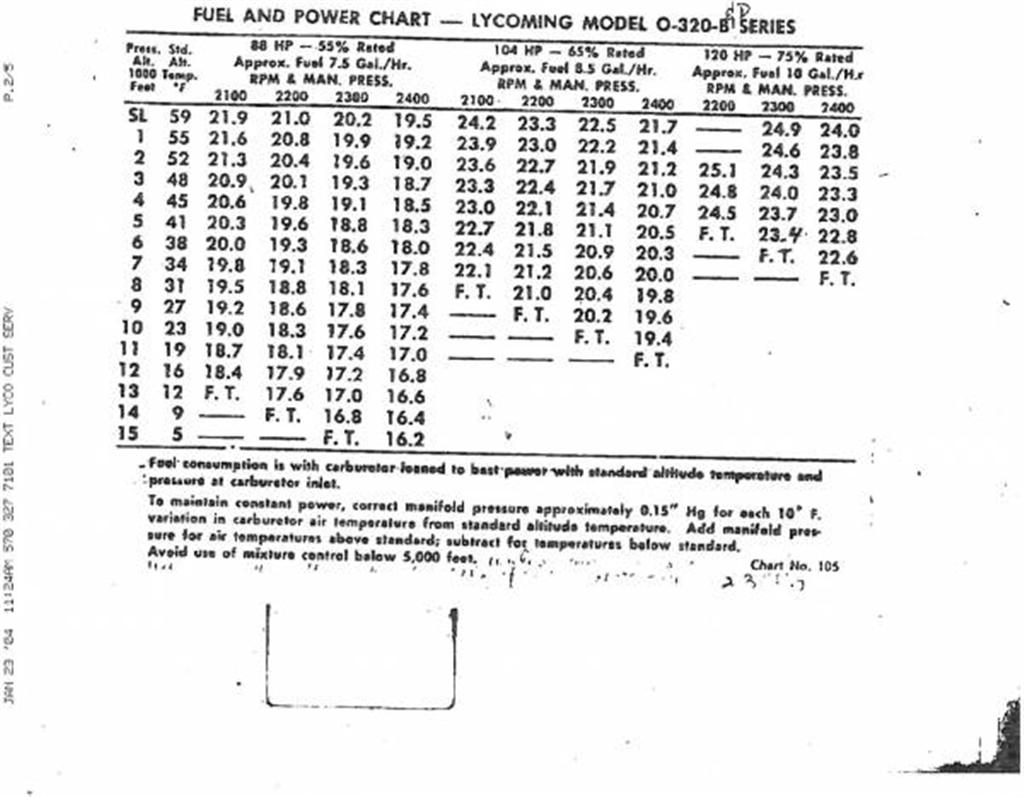Trying to establish percent power for POH for RV9A, with 160 HP Catto prop. ANy ideas?
Thanks,
Sam
Thanks,
Sam

Trying to establish percent power for POH for RV9A, with 160 HP Catto prop. ANy ideas?
Thanks,
Sam
I think you meant RPM/100 + MP.
Example: 2450/100 + 23.5 = 48 is approximately 75% power.
